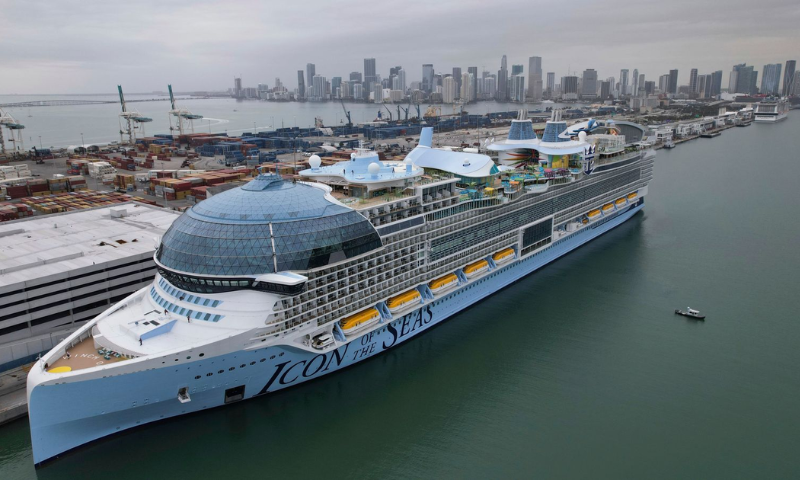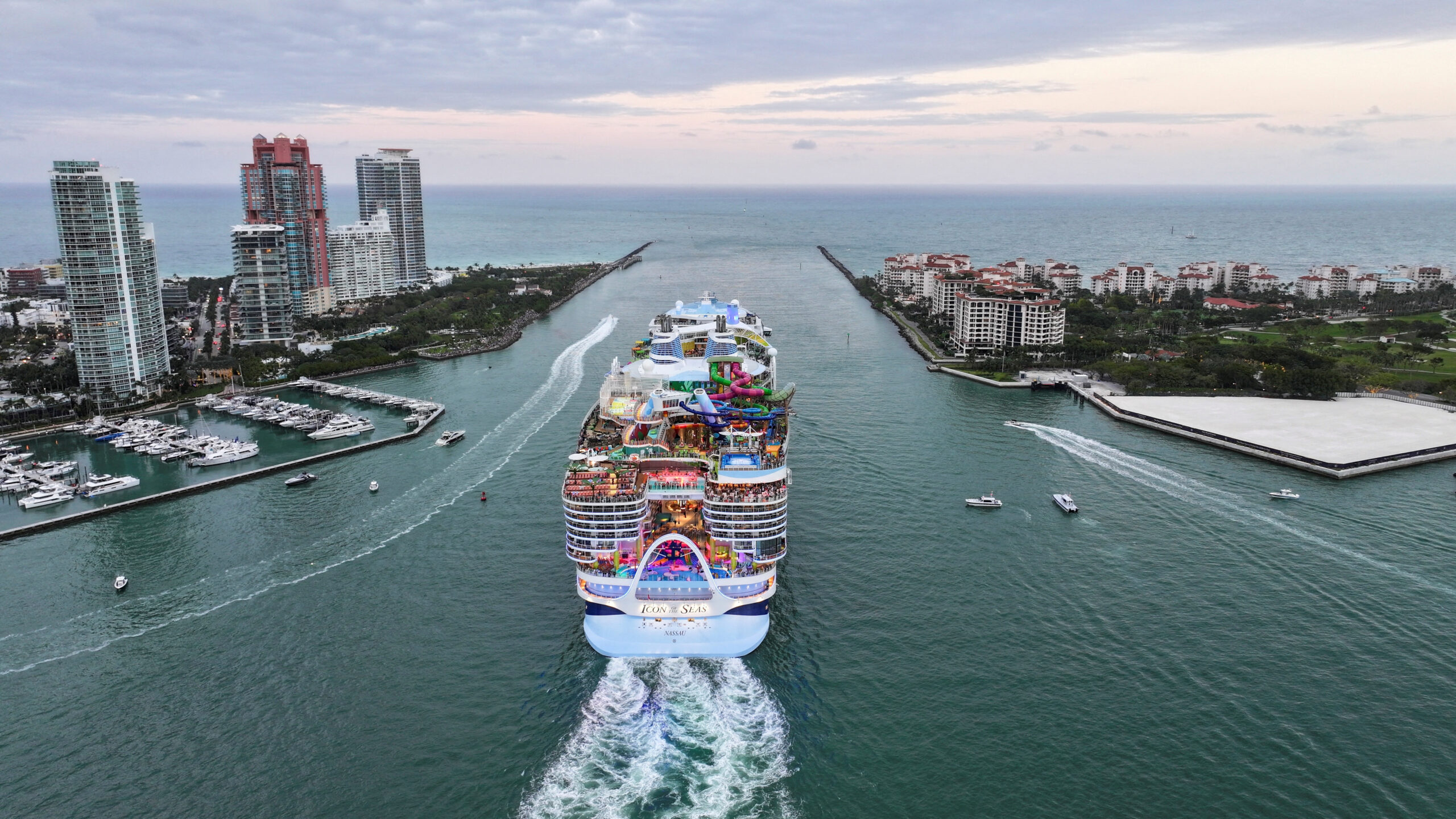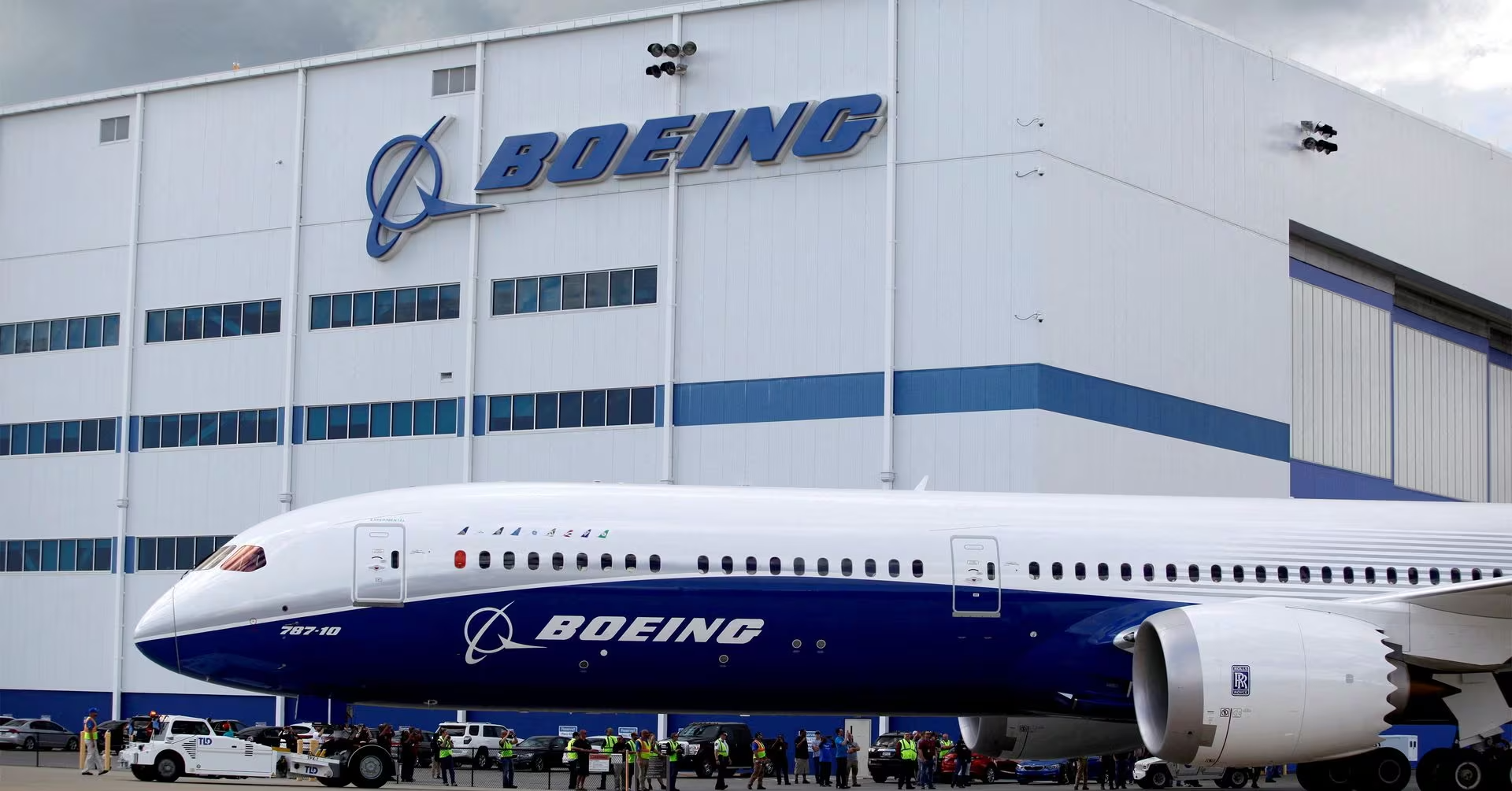Environmental organizations express concern over hazardous methane emissions from liquefied natural gas-powered vessels.
The world’s largest cruise ship, the Icon of the Seas, has embarked on its maiden voyage.
On Saturday, this Royal Caribbean vessel, accommodating up to 7,600 passengers and 2,350 crew members, set sail from Miami, Florida.
Measuring approximately 365 meters (about 1,200 feet), the ship comprises eight communities across twenty decks.
Onboard are six water slides, seven swimming pools, an ice rink, a theatre, and over forty restaurants, bars, and lounges.
It has started its first seven-day tropical journey, island-hopping along the way.
Icon of the Seas: Environmental Concerns
Icon of the Seas was officially christened on Tuesday with assistance from Inter Miami players and football icon Lionel Messi.
Six dual-fuel engines, one running on liquefied natural gas (LNG), power the ship. According to the Cruise Lines International Association, LNG significantly reduces sulfur and greenhouse gas emissions.

However, environmental groups worry that LNG-powered ships increase dangerous methane emissions.
As head of the Marine Programme at the International Council on Clean Transportation (ICCT), Bryan Comer told Reuters that this development is “a step in the wrong direction.”
“We estimate that the life-cycle greenhouse gas emissions of LNG as a marine fuel are over 120 percent higher than those of marine gas oil.”
Methane is eighty times more potent than carbon dioxide over twenty years in terms of warming effects. Experts see cutting emissions as vital to curbing the rise in global temperature.
Royal Caribbean states that every kilowatt used on the Icon of the Seas is “scrutinized for emission reductions and energy efficiency.”
Qatar claims Netanyahu purposefully obstructs Gaza mediation





